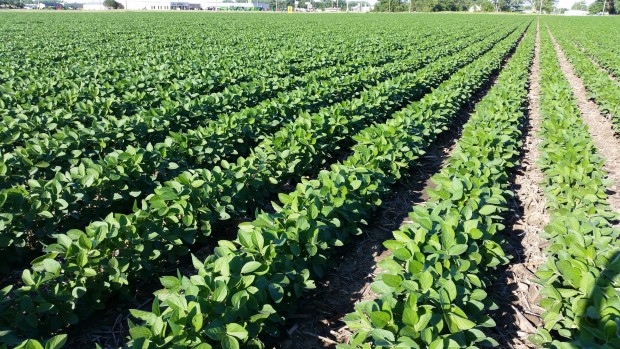SOUTH DAKOTA (Joshua Haiar / South Dakota Searchlight) – South Dakota soybean industry leaders said Monday that a new trade pledge with China is lifting prices but hasn’t erased anxiety about how much farmers depend on a single foreign buyer.
“China’s the number one buyer of soybeans out of the United States,” said Tom Kersting, CEO of South Dakota Soybean Processors. “At times, they buy 60% of all the exported soybeans out of the U.S.”
Kersting was one of the participants in a panel discussion about soybeans hosted by the Downtown Sioux Falls Rotary Club. South Dakota produced $2.3 billion worth of soybeans last year, the ninth highest value in the nation.
Kersting said China has “quietly” stepped back into the U.S. soybean market since Treasury Secretary Scott Bessent announced the trade pledge in late October, after China had been boycotting purchases of U.S. soybeans in retaliation for tariffs imposed by President Donald Trump. Soybean prices at grain elevators were “right around $9” per bushel before the news of the trade pledge, Kersting said, and are now “over $10.”
But farmers are not benefiting equally from the price bump. Some sold at lower prices before the trade pledge announcement.
“The prices really didn’t appreciate till after harvest was pretty much complete,” Kersting said. “The ones that had some beans stored, they’ll see those gains.”
By his rough estimate, a new $500 million Mitchell soybean processing plant that opened in September has added 25 cents per bushel in value to local cash bids.
Lake Preston farmer Paul Casper said the price increase has pushed him “closer to break-even on beans,” while Trump’s tariffs have raised the price of farm inputs such as fertilizers.
Casper said Brazil has emerged as a rival to U.S. soybean farmers after years of infrastructure investment backed by China, which makes the future feel less certain. Yet Casper said he still has faith in Trump.
“I’m still thinking this dealmaker dude has got something up his sleeve,” Casper said.
Kersting said the threat of tariffs nudged other buyers to the table, including Vietnam and Thailand, “who we sell a lot of soybean meal to.”
Both men warned that long-term overreliance on China leaves U.S. agriculture vulnerable.
“At the end of the day, you should not be making deals with people you don’t trust, and nobody trusts them,” Kersting said.
Doug Sombke, president of the South Dakota Farmers Union, did not appear on the panel, but said weeks ago after the trade pledge announcement that Trump is attempting to put out a fire he himself started, “and the building is already charred.”
“We went backward from where we started, and we didn’t need to do that,” Sombke said. “This isn’t a win. We’ve been played.”
Sombke said the numbers he has heard regarding the trade agreement fall short of what producers were counting on. He said smaller and beginning farmers are being squeezed the hardest.
“Well-established farmers are just going to eat through some of their equity,” he said. “But the younger farmer, the smaller guy, doesn’t have that.”
Sarah Sellars, an assistant professor and Extension specialist at South Dakota State University, told South Dakota Searchlight that the trade deal is “positive in a market that’s been facing a lot of negative news lately,” but said farmers “are still facing really tight crop margins.”
“If we’re not factoring in the money given by government programs or crop insurance, the cost of production is higher than what we’re actually able to sell the crop for,” she said.
On Monday, U.S. Agriculture Secretary Brooke Rollins said the Trump administration plans to announce a financial aid package for U.S. farmers and provide more details on the China trade deal within two weeks. The aid package is designed to compensate farmers with government payments for tariff-related losses.






